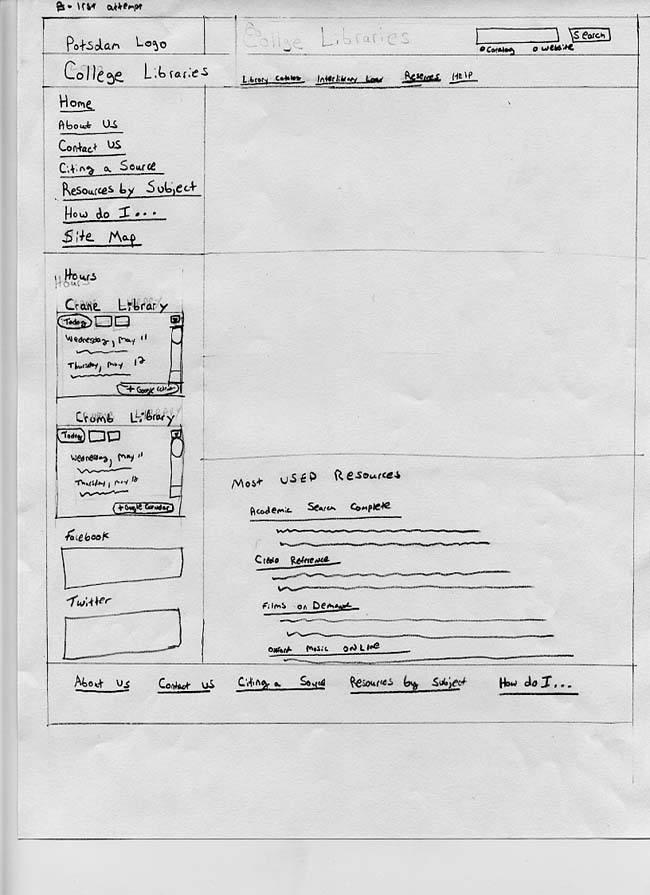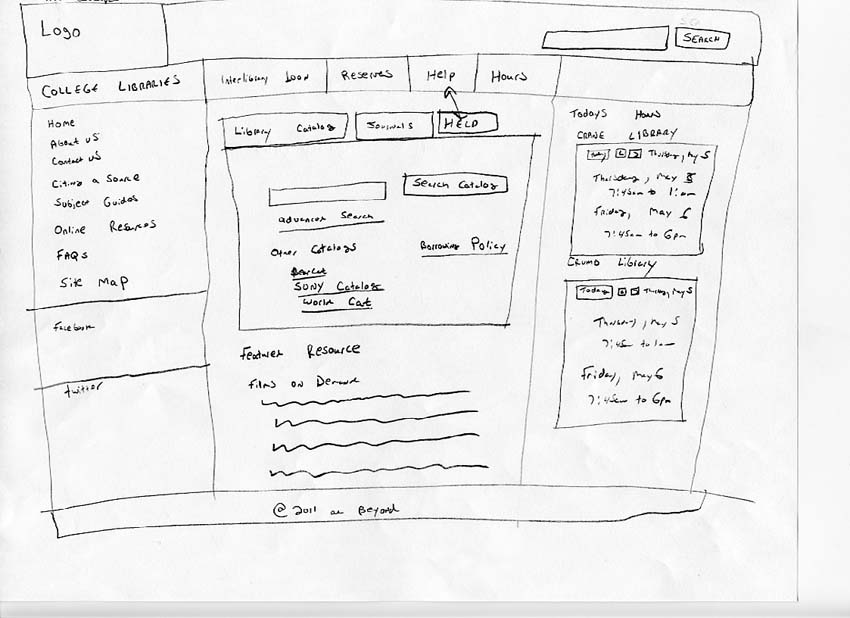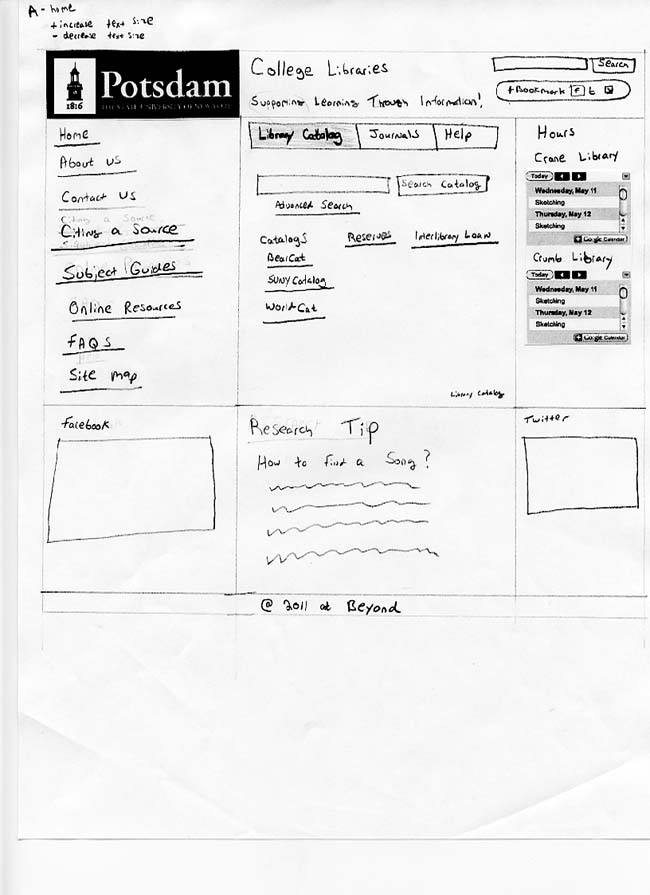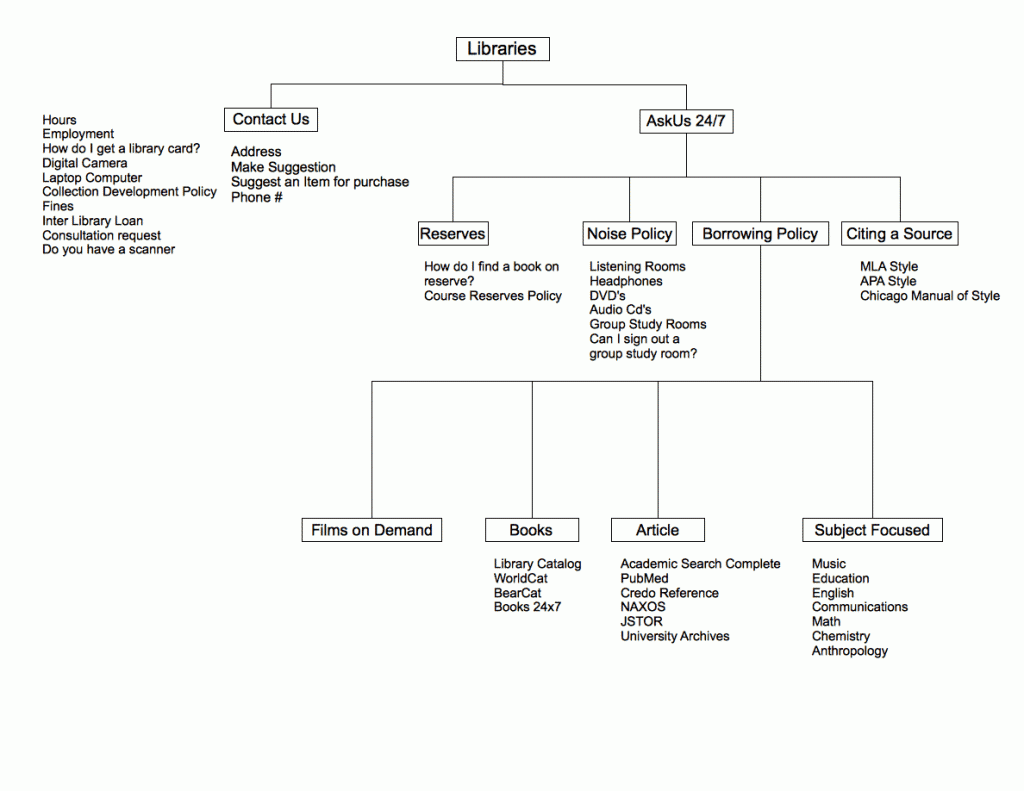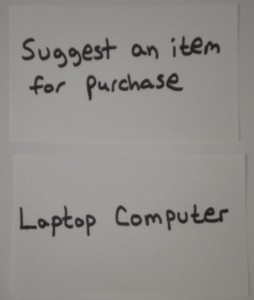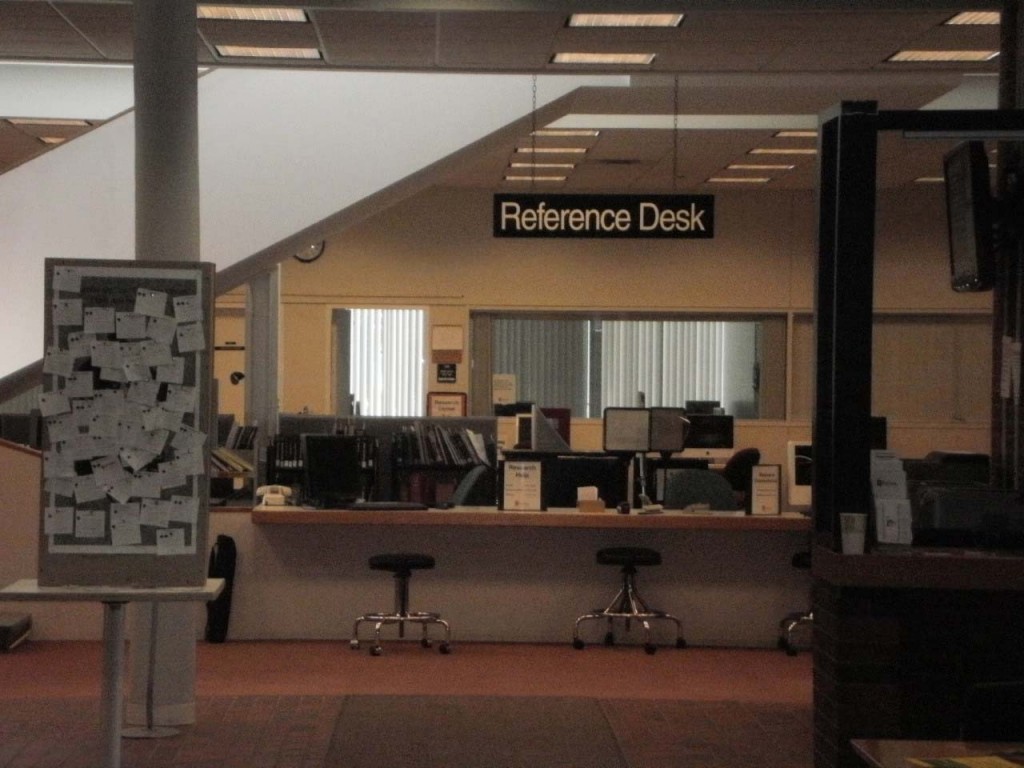After asking some general questions as stated in the previous post How Each Card Sort Was Conducted each group was asked an additional five questions. Here are the questions along with the responses that each group gave:
Are there any words or phrases that are confusing to you?
Group 1
Books 24×7, Credo Reference, NAXOS
Ask Us – The group did not know that this was a chat based service. Rather it was just an area that would allow you to find the information that you need.
Group 2
Ask Us 24/7, Films on Demand, NAXOS
Group 3
NAXOS
Group 4
Credo Reference, Books 24×7
Is there anything missing that did not appear on the cards?
Group 1
Printing Information – The group created two additional questions about printing and put them under their heading FAQ’s.
Group 2
No
Group 3
No
Group 4
Midi Lab
Would you rename any of the items that appear on the cards to become something else?
Group 1
No
Group 2
No
Group 3
No
Group 4
No
What do you think AskUs 24/7 means?
Group 1
A place to go to ask someone a question who works in the library. Only one person in this group new that Ask US 24/7 was a chat service.
Group 2
Made Ask Us 24/7 a category to start with, but than changed it to become FAQ’s
Group 3
A location where you can send an email or you can get the answer to a question by looking in a specific place. Another way it was described was a way to search through information to locate the answer that you need. This group used Ask Us 24/7 as a category.
Group 4
This group was not sure what the phrase meant; However, they thought that it was a place you could ask a question about the libraries regardless of its hours.
Is there anything that you think is important for us to know?
Group 1
Add some information about the reference desk
- What is it and where it is located
- Why would someone use or go to the reference desk
Group 2
no response given
Group 3
no response given
Group 4
no response given
Even though a group may have answered no to a question in reality it may have been really a yes. When taking a look at how the groups organized the items into categories they may not have been placed in the correct location. The majority of the items that were confusing to people happen to be the name of the databases or the phrase ‘Ask Us’. Based upon these results of the card sort having a list of databases by name would not be useful because a person would not know which one to select. The only way a person would know what database to select is if they had used it in the past to find information or if someone has told them the name of a specific database to use. For example, if a librarian mentioned to a student that JSTOR would be useful in finding peer reviewed articles then a person would be looking specifically for this database by name. On the other hand, if they are looking for useful resources looking at a list of databases would not be useful to them because it would be like trying to find a needle in a haystack.
There were a few words that groups did not identify as confusing that surprised me. I expected to see more names of databases to appear along with BearCat and WorldCat to be mentioned; However, they were not mentioned. Using made up words is not a good idea in everyday life and especially as it pertains to the internet unless it is the name of your company. In talking with the groups it was not a surprise that Ask Us or Ask Us 24/7 were confusing to them or that they did not know what they mean.
One of the most significant usability problems is to make up a name for something that nobody understands. It would be similar for a person who speaks Gaelic to try and talk to someone who speaks Arabic. According to Nielson and Loranger
“Clever made-up words or category names are problematic because people don’t understand them. People tend to skip over meaningless words” (192).
Another usability problem that still occurs is to use the color blue for headings or text that are not links. These are two very simple principles that still get ignored by many organizations. Lets stop making up words and start eliminating the barriers that prevent people from accomplishing their task. If we really want our patrons to use the electronic services that the libraries have to offer we need to make them easier to use.
Nielsen, J., & Loranger, H. (2006). Prioritizing Web Usability. Berkeley, CA: New Riders.

